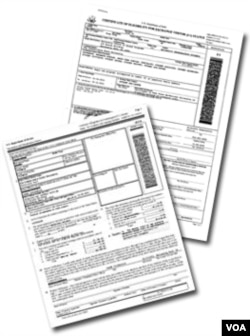Whether international students want to return to the home country, or explore Mexico, Canada or any country nearby the U.S during their spring break or summer vacation, they have to make sure to bring the appropriate immigration documents, including SEVIS I-20/DS-2019 – the forms that certify that an international student is eligible to study in the United States.
To protect internationals’ status in the U.S., both the I-20 (F-1 students) and the DS-2019 (J-1 students/ scholars) have to confirm the last signed date for travel by an immigrant advisor. The signature is expired after 12 months. If the date is expired, international students will have trouble re-entering the U.S.
Schools emphasize the importance of this travel signature on immigration documents when students first start orientation.
“The travel signature…shows that the student is continuing their status when they re-enter…[and] the students is continuing to meet the requirements of their status, as confirmed by a school office,” said Sean Milton, an assistant director for international education at Northern Arizona University.
If you do forget your travel forms, though, don’t worry! Here are three ways to solve problems that come up when international students forget to get travel signatures on the immigration documents.
First, if an international student forgets to get a travel signature, the fastest and best way to fix the problem would be to send immigration documents by express mail to the international office of their school for signatures. Most schools are able to receive express mail, so the process usually takes within a week or less.
Another way is to get a new copy of I-20 from your school – most schools’ international offices can send an updated copy of the form directly to international students if they don’t get travel signature before leaving.
But if you don’t have enough time for either of those options, there is a third way: you can bring some additional documents from your college that certify you’re a student. Two examples – an unofficial transcript and a receipt of payment of tuition – are easily to obtain from your school profile online. While not ideal, these forms will allow a port of entry officer to give you an I-515, which allows international student entry to the U.S in F-1 or J-1 status for 30 days.
But remember: even if you now know how to solve these common issues with immigration forms, the easiest way to solve a problem is never to face it at all – so make sure to keep your documents safe before, during, and after you travel!
Jeonghyun Kim is a VOA intern for the English web desk. She is from South Korea, and is currently pursuing her Masters in Professional Studies in Journalism at Georgetown University.
To protect internationals’ status in the U.S., both the I-20 (F-1 students) and the DS-2019 (J-1 students/ scholars) have to confirm the last signed date for travel by an immigrant advisor. The signature is expired after 12 months. If the date is expired, international students will have trouble re-entering the U.S.
Schools emphasize the importance of this travel signature on immigration documents when students first start orientation.
“The travel signature…shows that the student is continuing their status when they re-enter…[and] the students is continuing to meet the requirements of their status, as confirmed by a school office,” said Sean Milton, an assistant director for international education at Northern Arizona University.
If you do forget your travel forms, though, don’t worry! Here are three ways to solve problems that come up when international students forget to get travel signatures on the immigration documents.
First, if an international student forgets to get a travel signature, the fastest and best way to fix the problem would be to send immigration documents by express mail to the international office of their school for signatures. Most schools are able to receive express mail, so the process usually takes within a week or less.
Another way is to get a new copy of I-20 from your school – most schools’ international offices can send an updated copy of the form directly to international students if they don’t get travel signature before leaving.
But if you don’t have enough time for either of those options, there is a third way: you can bring some additional documents from your college that certify you’re a student. Two examples – an unofficial transcript and a receipt of payment of tuition – are easily to obtain from your school profile online. While not ideal, these forms will allow a port of entry officer to give you an I-515, which allows international student entry to the U.S in F-1 or J-1 status for 30 days.
But remember: even if you now know how to solve these common issues with immigration forms, the easiest way to solve a problem is never to face it at all – so make sure to keep your documents safe before, during, and after you travel!
Jeonghyun Kim is a VOA intern for the English web desk. She is from South Korea, and is currently pursuing her Masters in Professional Studies in Journalism at Georgetown University.




